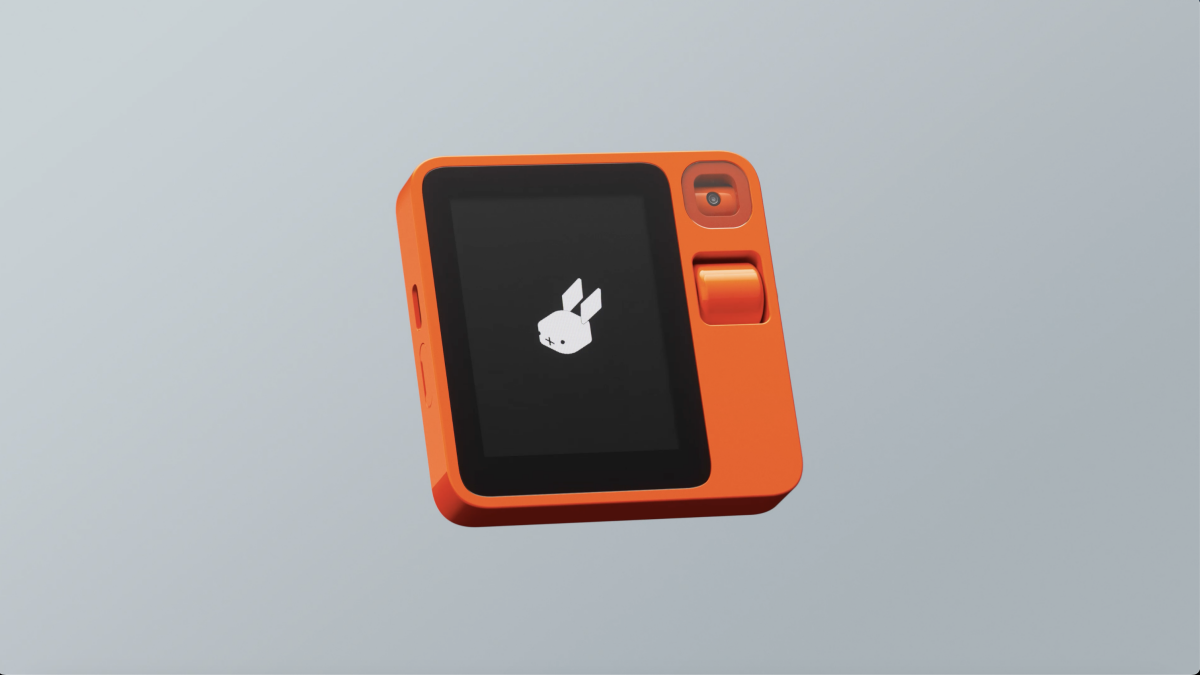
The debut of the Rabbit R1 AI Assitant feels like a full-circle moment in tech. The existence of this palm-sized personal voice assistant comes from Rabbit CEO Jesse Lyu’s desire to go back to a time when using a phone was simple. And that belief is catching on, as according to Lyu, Rabbit’s AI-pocket gadget has sold out of its initial 10,000 units.
What the Rabbit R1 is or does is a hard question to answer. It’s not a smartphone (well, not exactly), and it’s not just a voice assistant like Alexa (although it kinda is). That’s why ahead of another round of preorders in the spring, we took a deep dive into exactly what the Rabbit R1 does, how it works, and whether it can replace our smartphones.
What is the Rabbit R1 AI Assistant?
Unveiled at CES 2024, Rabbit R1 is a $200 handheld AI assistant with a 2.88-inch touchscreen. The device, co-designed with Teenage Engineering, resembles a walkie-talkie with its square design and eye-popping orange — adding to its retro feel. It includes features like a camera, a control wheel, speakers, and microphones. Additionally, it has 4GB of memory, 128GB of storage, and runs on a 2.3GHz MediaTek processor.
It’s surprisingly light and only half the size of an iPhone 15. However, unlike the iPhone 15, Rabbit R1 doesn’t have apps; instead, you can connect to the apps on your phone. Operating on Rabbit OS, the R1 runs on a Large Action Model (LAM), an AI model that can navigate app interfaces to perform tasks. It responds to voice commands and is capable of activities like booking rides, managing household tasks, and answering queries.
While it’s not so different from what we already do with our smartphones, the purpose, according to Lyu, is to offer a more focused and less intrusive digital experience. Plus, what’s cool is that, with its dedicated training mode, you can teach the R1 how to interact with certain commands, and it will do that going forward.
This is all because of R1’s LAM, which is designed to be adaptable, allowing it to learn and interact with new applications. This feature means that the device’s capabilities can be expanded beyond pre-installed apps, adapting to various user interfaces and functionalities. This training aspect enhances the R1’s utility, making it a versatile tool for a range of tasks and interactions.
As The Verge notes in their hands-on with the device, how this will work in practice is unclear as the only working model that exists at this moment is the one Lyu owns. Despite its adaptability in what it can work with, at the end of the day, the R1 is still a glorified Google Assistant. But cute and orange.
Why is it so popular and how do I get one?
As of right now, you can’t. As noted earlier, Rabbit announced that its initial order of 10,000 units has sold out. There was even a second batch scheduled for March that is now sold out as well.
Part of its swift and sudden popularity is that, in theory, the R1 is designed to fundamentally change how humans interact with technology. One of the big recurring themes at CES 2024 was the Internet of Things (IoT), with many companies focusing on integrating with existing operating systems like iOS or Android. Every startup and big company wants your phone connected to a suite of tech inside your house, so the nostalgic simplicity of the R1 has been an instant hook.
Just look at this tweet calling Lyu’s announcement the “iPhone moment for the AI era.”
Or you can save your $200, seeing that tech wizards on X (formerly Twitter) have already rebuilt the Rabbit AI inside of a smartphone.
See what I mean about things coming full circle?






